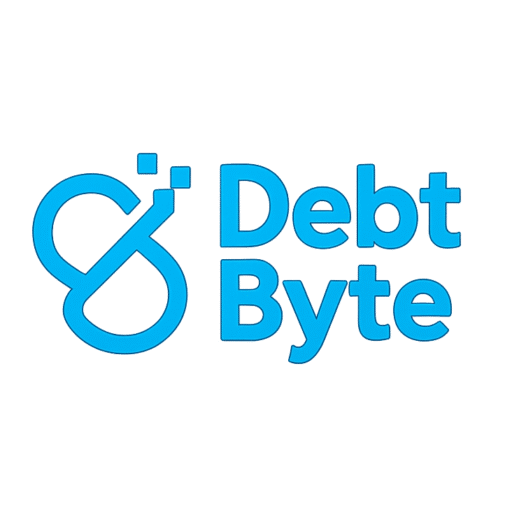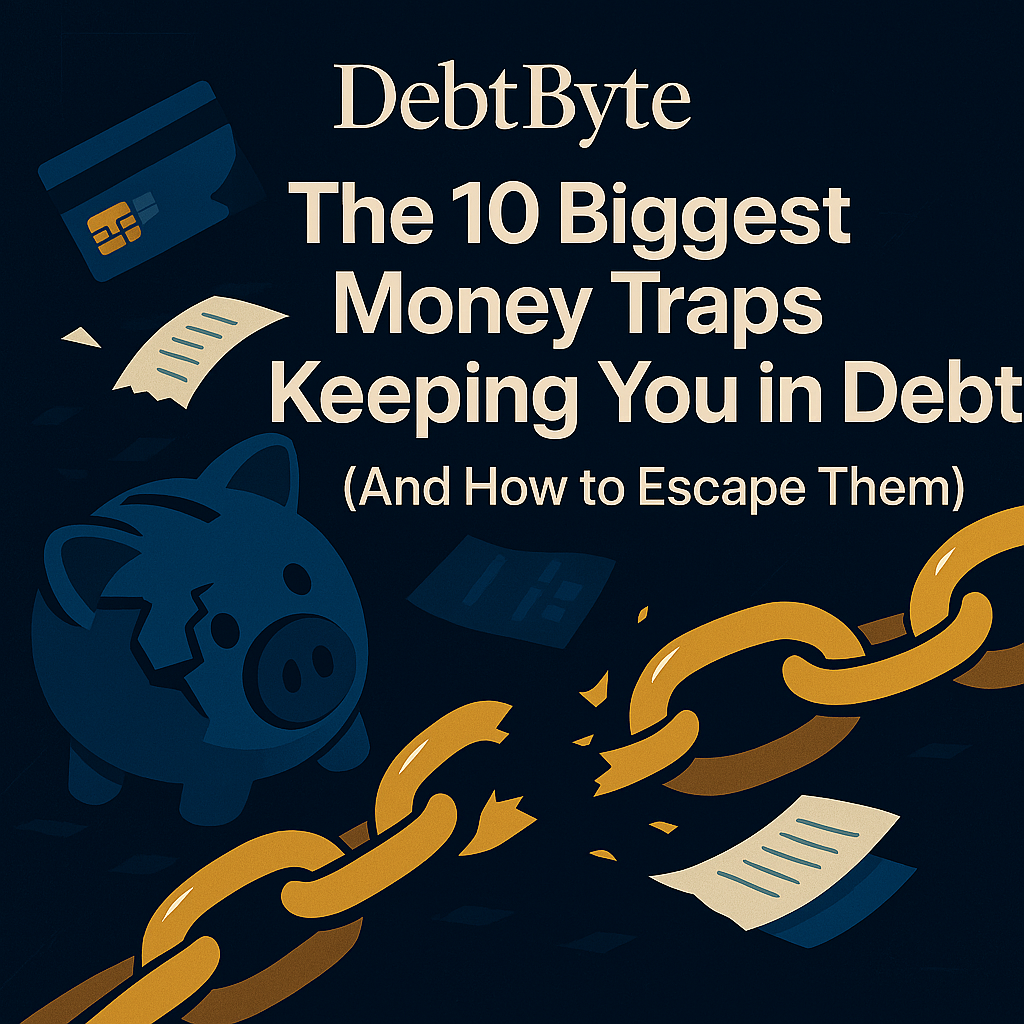When we talk about debt, it’s never just about numbers—it’s often about habits, mindset, and subtle money traps that we let slide right under our noses. These traps are more than overspending; they’re psychological snares that keep us chasing short-term gratification while sacrificing long-term freedom. Let’s break down the 10 biggest money traps keeping you in debt—and, more importantly, how to escape them.
1. The Credit Card Interest Trap
What’s the Trap? Credit cards are seductive. Low introductory rates lure you in, but then interest accrues like hidden fees on every purchase. Before you know it, those minimum payments barely chip away at your actual balance, and the interest compounds.
How to Escape:
- Pay More Than the Minimum: Even an extra $10 here and there makes a difference.
- Switch to Low-Interest or 0% Cards: Strategically transfer balances to manage and reduce interest charges.
- Budget for Paying Down Debt: Allocate a specific “debt crusher” portion of your income each month.
2. Sneaky Subscription Services
What’s the Trap? From streaming platforms to monthly delivery boxes, subscriptions are small recurring charges that add up. You may forget one expires, or you might not even remember signing up for half of them.
How to Escape:
- Audit Your Subscriptions: Regularly review and cancel any you no longer use.
- Set Calendar Alerts: A reminder a month before renewal can save you.
- Bundle or Downgrade: Look for family plans or lower-tier subscriptions that cover your needs.
3. Impulse Spending
What’s the Trap? A spontaneous purchase might feel harmless—but it’s a slippery slope. Impulse buys dismantle your budget with each unplanned splurge, reinforcing a cycle of regret that eventually forces you to rely on credit.
How to Escape:
- Create a 24-Hour Rule: Sleep on non-essential purchases to see if you still need them.
- Use a List: Stick to a shopping list when you’re out, whether it’s groceries or gifts.
- Track Spending: Use apps to monitor impulses and reflect on triggers.
4. Dining Out & Delivery Overload
What’s the Trap? Convenience foods and delivery services are designed to make life easier—but also to drain your bank account. The costs of convenience, delivery fees, and tips quickly accumulate.
How to Escape:
- Meal Plan & Prep: Build a weekly menu that encourages you to cook at home.
- Set a Dining-Out Budget: Limit eating out to a specific monthly amount.
- Experiment with Cheaper Alternatives: Swap occasional delivery for a shared homemade meal with friends.
5. Retail Therapy
What’s the Trap? When stress or boredom strikes, shopping can feel like a quick fix. But retail therapy often leads to buying things you don’t need, burdening you with clutter—and debt.
How to Escape:
- Find Alternatives for Stress Relief: Consider hobbies, exercise, or a power walk instead.
- Wait It Out: Leave your card at home for non-emergency shopping trips.
- Recognize the Trigger: Identify emotional spending patterns and seek healthier outlets.
6. The Car Conundrum
What’s the Trap? Cars are necessary, but expensive. High monthly payments, excessive insurance, and maintenance costs combined with luxurious auto loans make them notorious debt magnets.
How to Escape:
- Buy What You Need, Not What You Dream: Stick to a reliable, fuel-efficient model rather than an expensive ride.
- Consider a Lease or Used Vehicle: Weigh the costs of depreciation before investing in a new car.
- Maintain Regularly: Small preventive measures help avoid huge repair bills down the road.
7. Lack of Expense Tracking
What’s the Trap? It’s hard to fix what you can’t see. Many of us remain unaware of where our money flows simply because we don’t track our spending meticulously.
How to Escape:
- Budget Apps & Tools: Use tools like Mint, YNAB, or a simple spreadsheet to monitor every dollar.
- Regular Reviews: Set a monthly “money meeting” with yourself to review spending and adjust your plan.
- Set Alerts: Many banks offer alerts for unusual spending patterns—use them!
8. Instant Gratification Mindset
What’s the Trap? We live in a world that rewards immediate rewards, from one-click shopping to fast food. This mindset prioritizes short-term joy, leaving little room for saving or thoughtful planning.
How to Escape:
- Practice Mindfulness: Pause before purchasing—ask if it aligns with your long-term goals.
- Visualize Your Future: Keep a picture of your debt-free dreams or financial goals where you can see them daily.
- Celebrate Milestones: Reward yourself for savings milestones (non-monetary rewards can be just as powerful).
9. Dependence on Payday Loans
What’s the Trap? Payday loans offer quick cash but at insanely high-interest rates. Falling into the payday loan cycle can trip you into deeper debt, with fees compounding every cycle.
How to Escape:
- Build an Emergency Fund: Even a small buffer can prevent the need for a payday loan.
- Seek Alternative Support: Look into community resources or programs designed for short-term financial needs.
- Explore Credit Counseling: Professional help might reveal safer, more sustainable options for managing cash flow gaps.
10. Lifestyle Inflation
What’s the Trap? As your income grows, so do your expenses. Upgrading every aspect of your lifestyle may feel rewarding, but it can also lock you into higher spending patterns that prevent true savings.
How to Escape:
- Keep a Frugal Baseline: Maintain your core, budget-friendly habits even as your income increases.
- Prioritize Long-Term Goals: Instead of splurging on the latest gadgets or fashion, redirect extra dollars into investments or debt repayment.
- Automate Savings: Commit to automatically transferring a percentage of higher income to savings or investment accounts.
Breaking Free: Your Action Plan
- Audit Your Spending: Identify which traps hit you the hardest and list them.
- Set Clear Goals: Define what financial freedom looks like for you (whether it’s paying down debt faster or building an emergency fund).
- Make a Plan: Choose at least three traps to tackle immediately with measurable steps.
- Monitor Progress: Use budgeting tools to track your success, and adjust your habits regularly.
- Celebrate Small Wins: Every progress step is a win—celebrate them to stay motivated!
In our fast-paced world, these money traps can seem invisible, yet they silently chip away at our financial freedom. By exposing and addressing these pitfalls with practical, psychological insights, you’re taking control of your finances—one calculated decision at a time. Remember, lasting change is about replacing harmful habits with empowering ones that drive you toward a debt-free future.
What money traps have you encountered? Share your experiences or tips below, and let’s empower each other to break free!


Leave a Reply